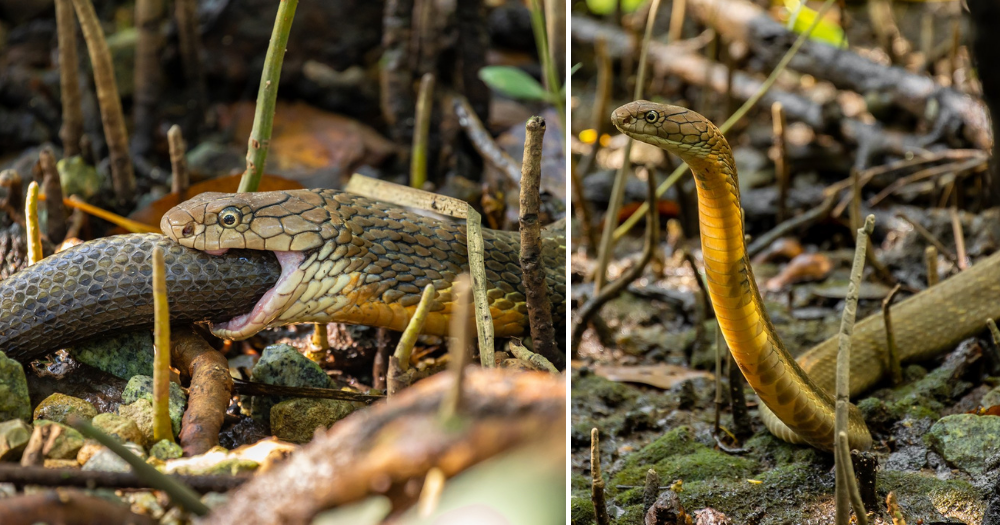You might have recently seen chilling photos circulating online of a majestic king cobra devouring a reticulated python at Sungei Buloh.
On July 1, one photographer managed to snap more shots of a king cobra in the midst of its meal.
Time to hunt
Daryl Tan was visiting the wetland area in the morning with the specific goal of catching the large snake feeding.
Speaking to Mothership, he said that the king cobra had been sighted the last three days at Sungei Buloh.
However, no photos were posted of the cobra feeding. Tan thus speculated that there was a high chance the cobra would emerge to feed.
The weather also played a part in the prediction — Tan visited the place when the sun came out after a brief rainy lull. As snakes and other reptiles are cold-blooded, they often bask in the sun in order to raise their body temperature.
With plenty of snakes likely out and about enjoying the heat, Tan believed that the king cobra, a species which preys on other snakes, would emerge to hunt.
Chowing down on a dog-faced water snake
He was not wrong. Tan shared in a Facebook post that he spotted the snake appearing to rest quietly among the mangrove roots.
It turned out that the situation was anything but peaceful though. The king cobra had managed to snare what appeared to a dog-faced water snake from its hidey-hole.
The larger cobra had the head of the smaller snake clamped between its jaws, and was steadily tugging it out of its burrow.
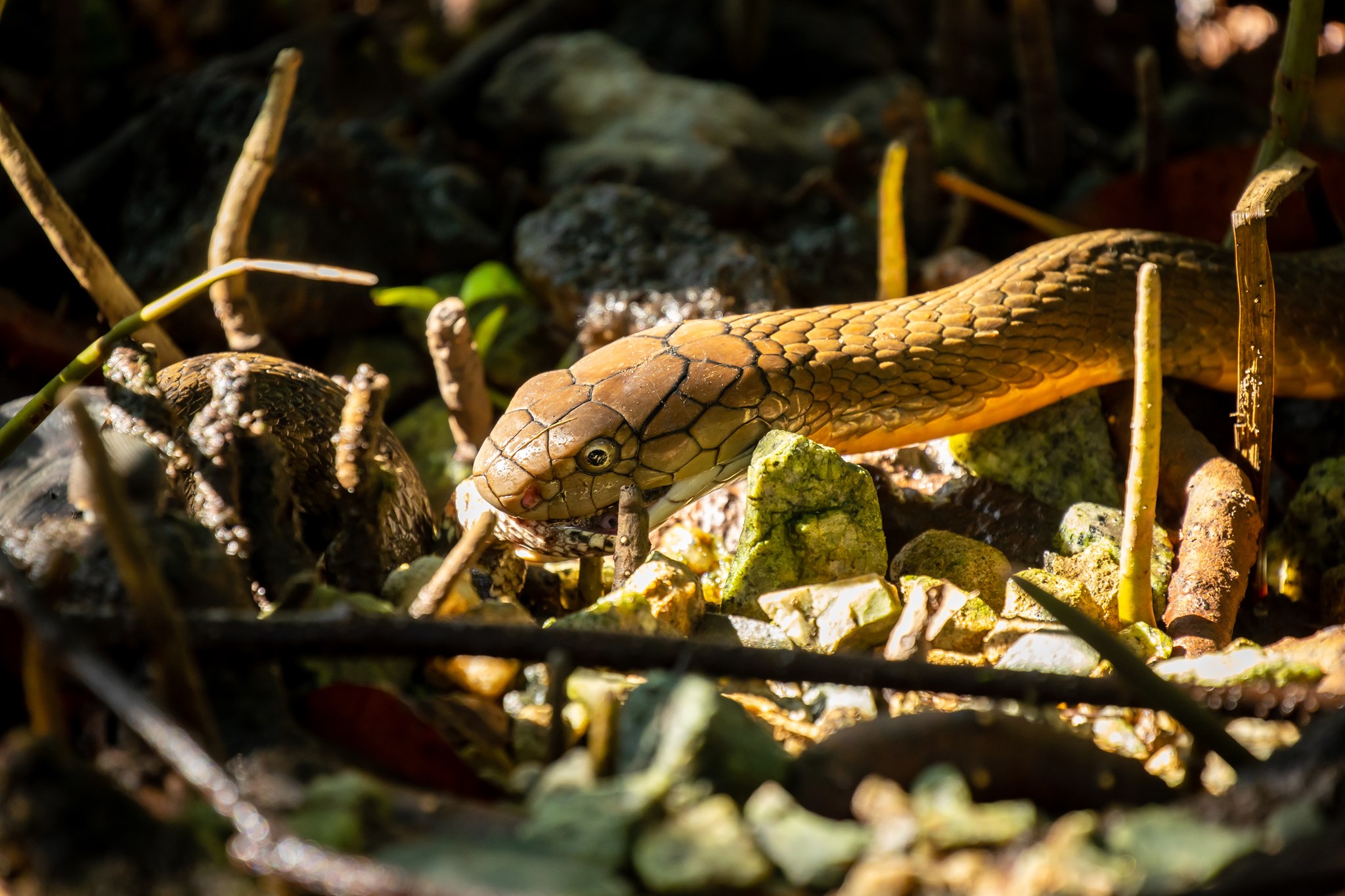 Photo courtesy of J K Daryl Tan
Photo courtesy of J K Daryl Tan
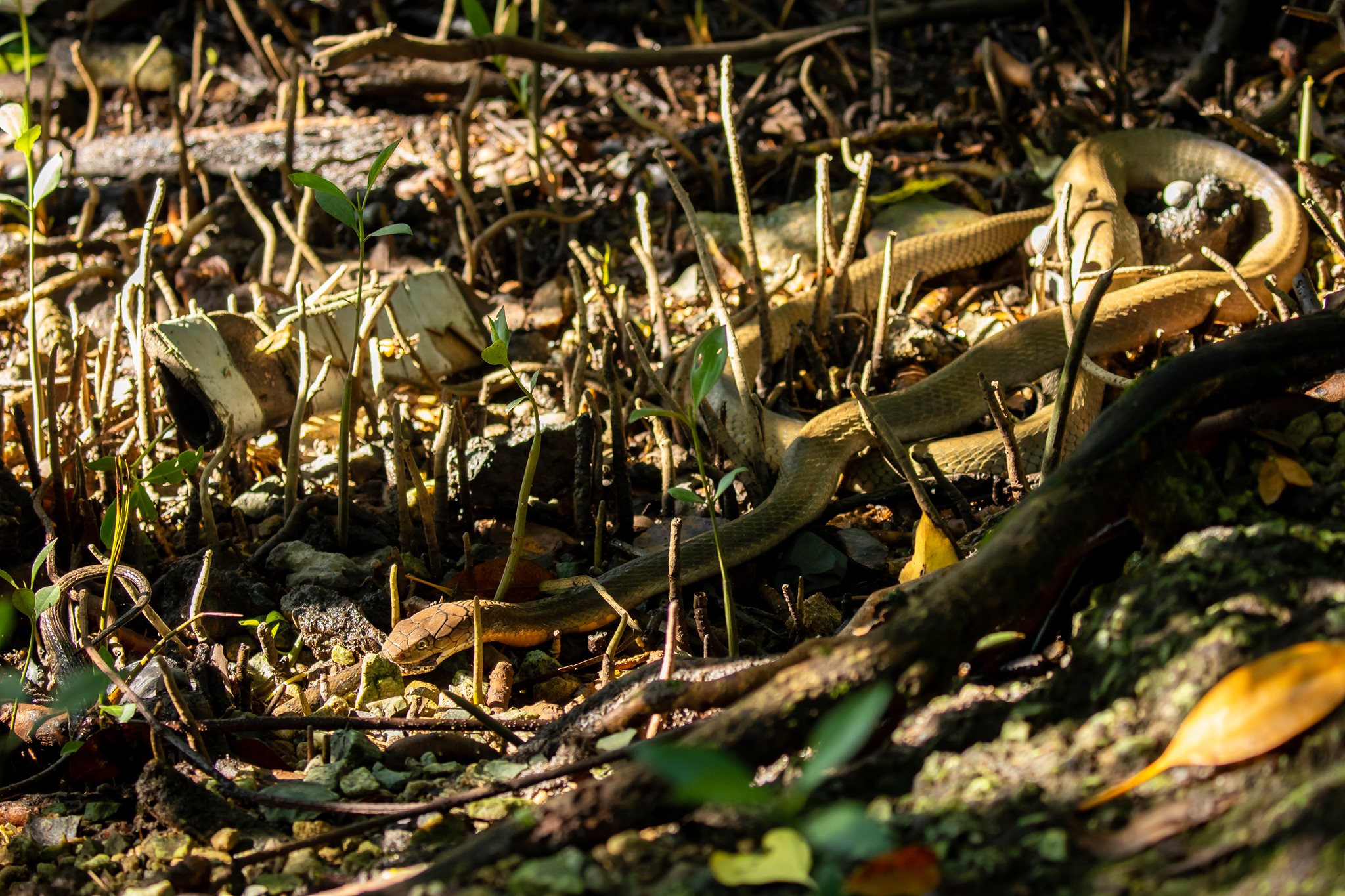 Photo courtesy of J K Daryl Tan
Photo courtesy of J K Daryl Tan
Tan observed that the dog-faced water snake, though not as long, was nearly as thick as the king cobra itself.
Undeterred, the king cobra kept a firm grip on it while waiting for its venom to kick in.
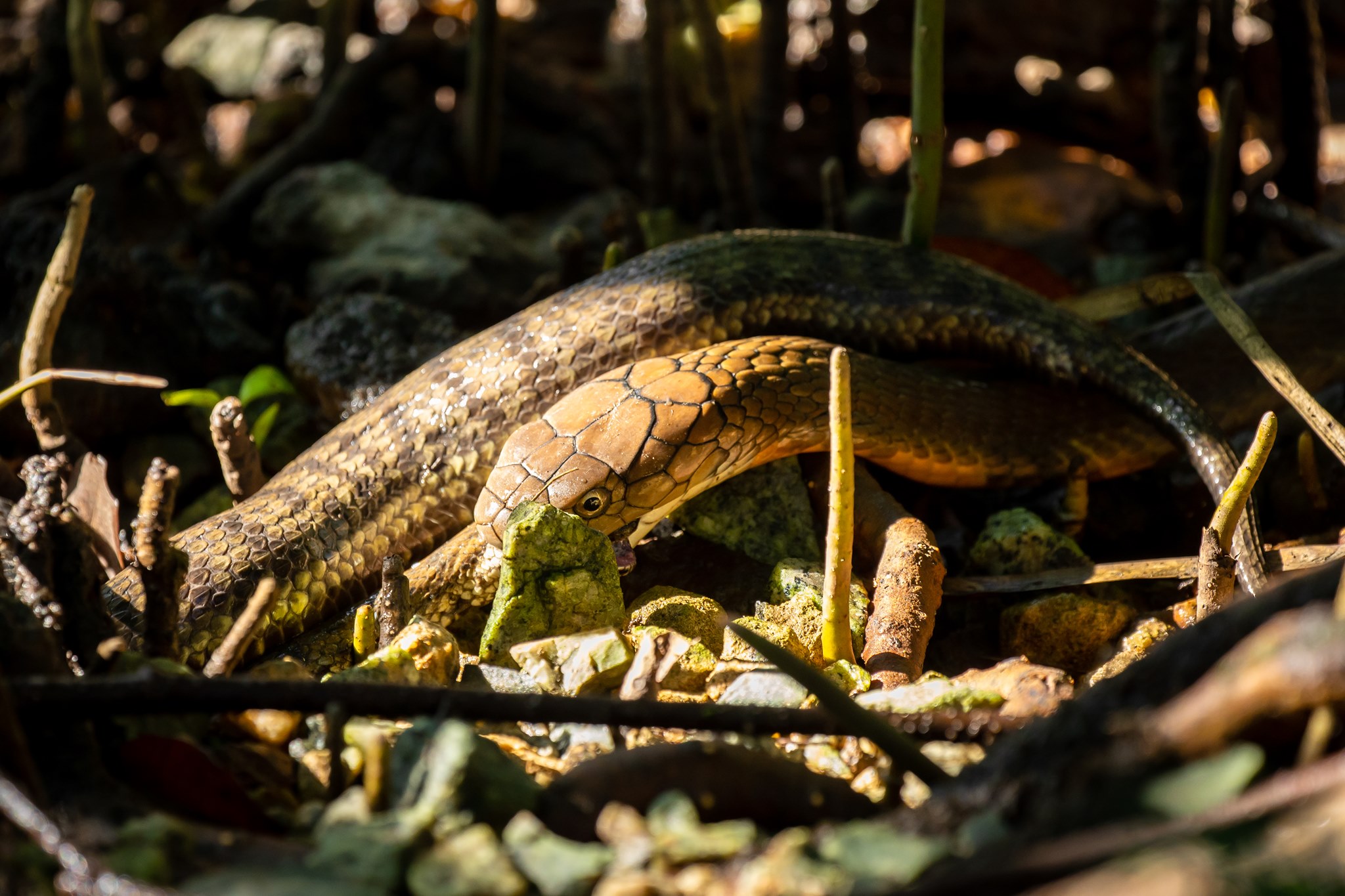 Photo courtesy of J K Daryl Tan
Photo courtesy of J K Daryl Tan
Once the water snake had succumbed to the venom, the cobra wasted no time in gobbling the other snake up.
This entire process took a mere 15 minutes.
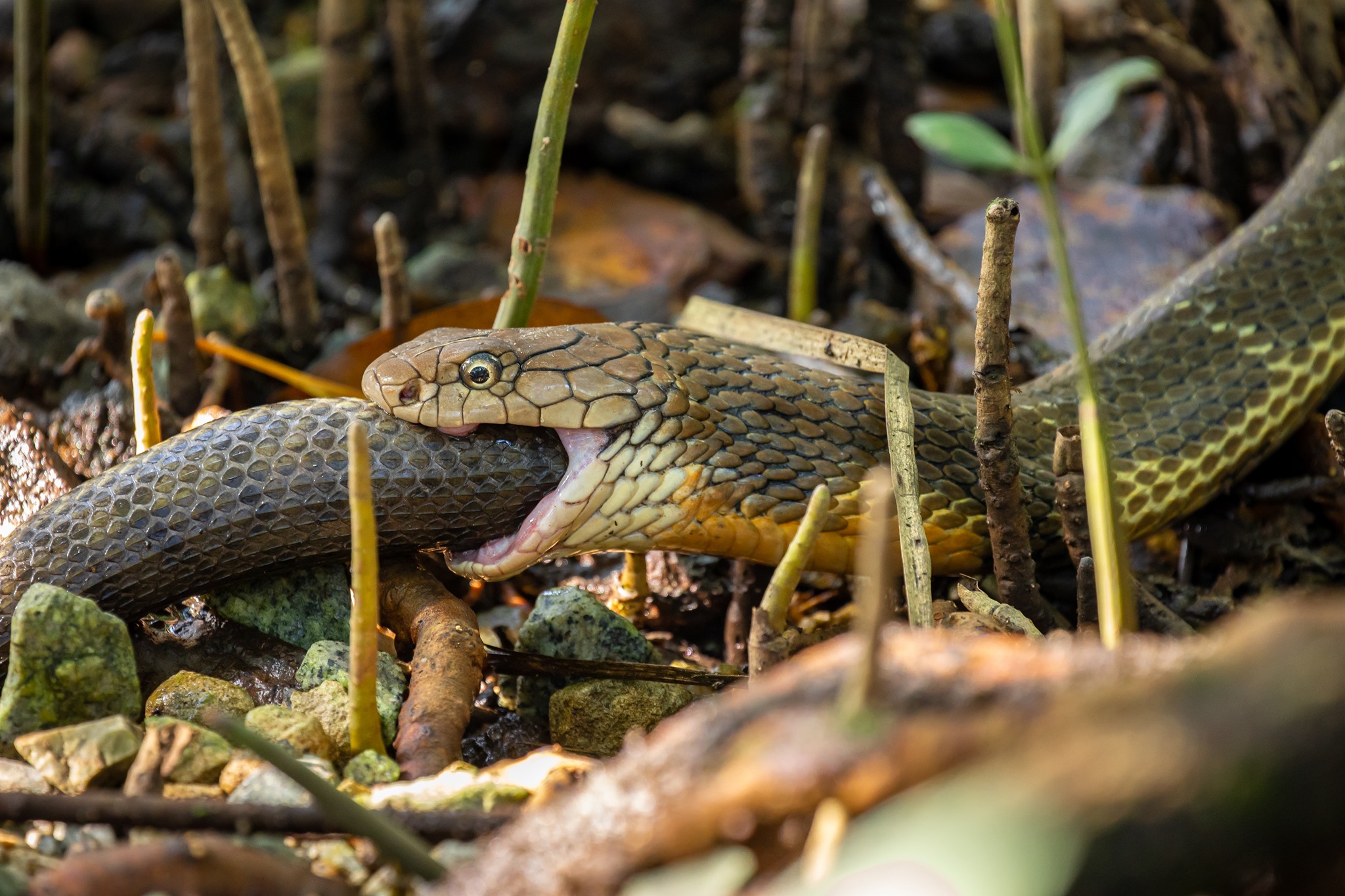 Photo courtesy of J K Daryl Tan
Photo courtesy of J K Daryl Tan
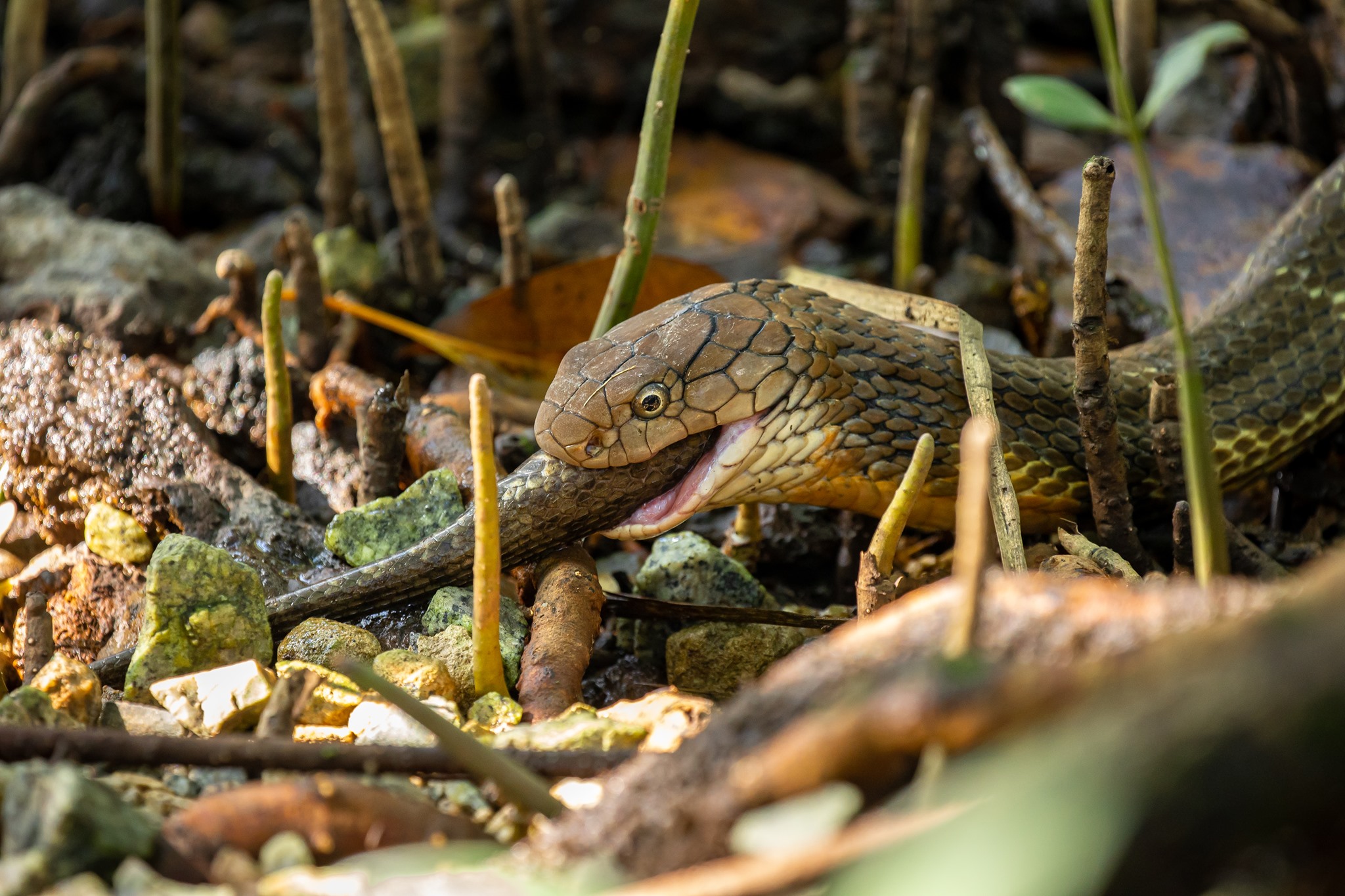 Photo courtesy of J K Daryl Tan
Photo courtesy of J K Daryl Tan
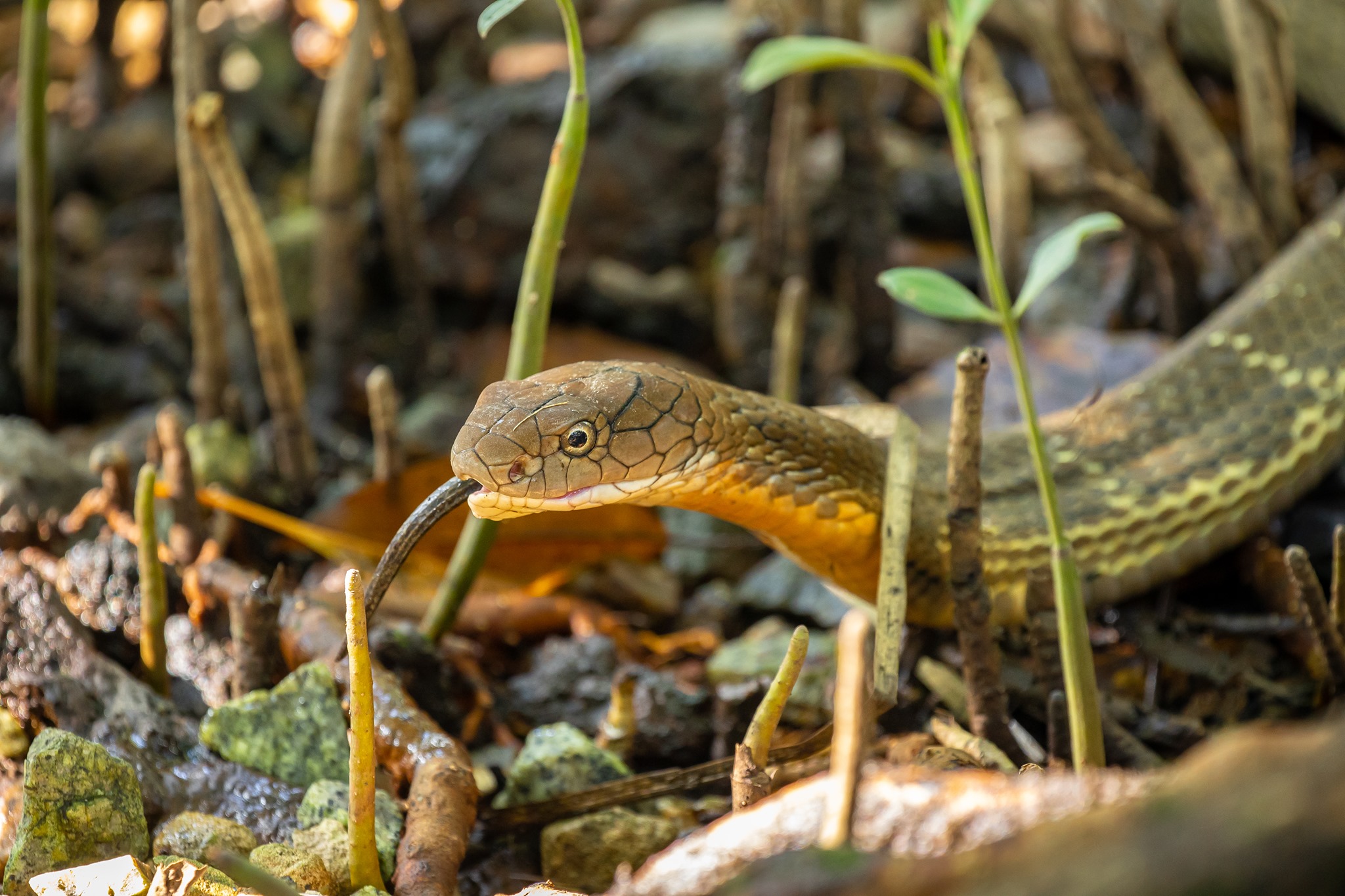 Photo courtesy of J K Daryl Tan
Photo courtesy of J K Daryl Tan
Yummy.
Snagged a second snake for dessert
However, the dog-faced water snake was apparently not enough to fill the cobra's belly.
It went on the prowl soon after.
Here it is alert and with its head raised in typical cobra fashion.
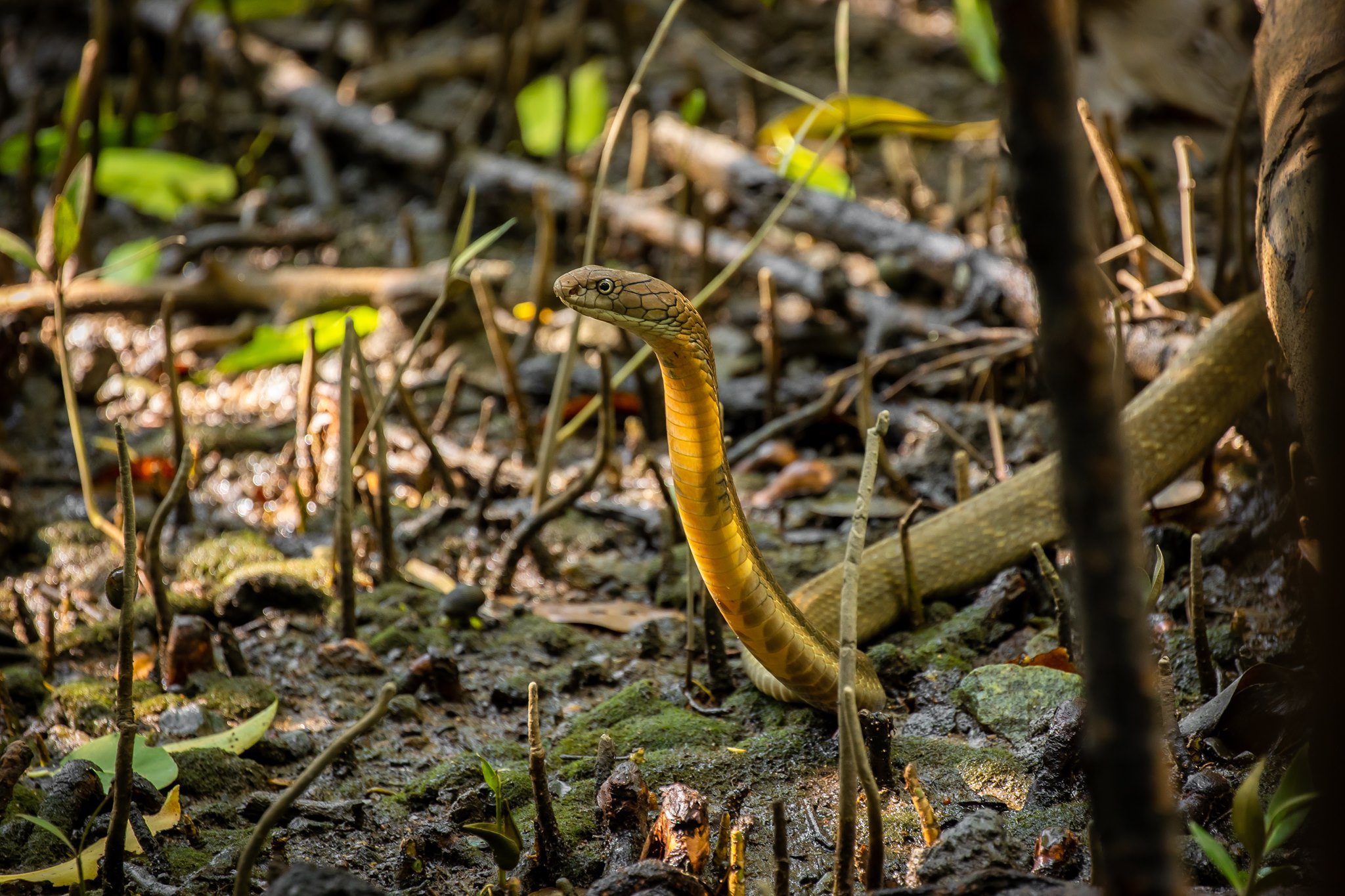 Photo courtesy of J K Daryl Tan
Photo courtesy of J K Daryl Tan
The snake initially headed for the water's edge. This concerned Tan, as "Tailless", Sungei Buloh's well-known resident tailless Estuarine crocodile was no more than 10m away.
The cobra seemed to have gathered its wits about it though, and subsequently headed in another direction.
It soon snagged yet another snake, a juvenile shore pit viper, for dessert.
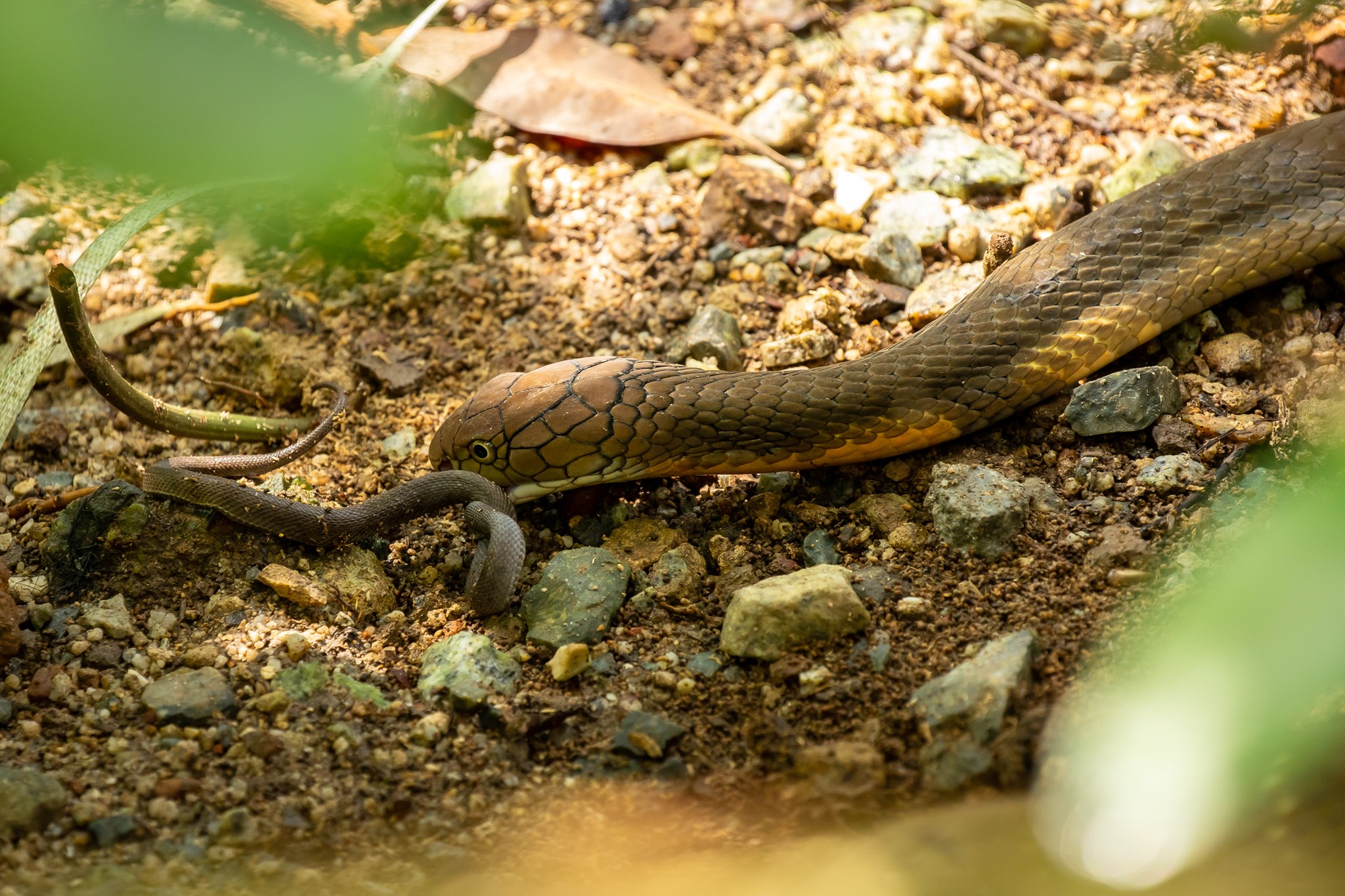 Photo courtesy of J K Daryl Tan
Photo courtesy of J K Daryl Tan
King cobras well adapted to eat other snakes
Although this is not Tan's first king cobra sighting, he said that the incident today was a particularly "incredible" one, as it is not usual behaviour for a snake to go hunting again after a big meal.
"Furthermore, its second snake was a venomous shore pit viper so it shows that the king [cobra] can go after venomous snakes too," Tan added.
One might think that preying on other snakes, all with an arsenal of defensive mechanisms such as fangs, venom and constriction, is a rather risky move for the king cobra.
Why not direct its energy towards much more vulnerable prey like squirrels and lizards?
The species however, is well equipped to do so — king cobras are not affected by toxins from other snakes. The species has evolved such that toxins are unable to bind to a specific chemical neurotransmitter in its body.
Where other species's neurotransmitters lose their function after the toxin binds to it, causing the snake to suffer from paralysis, respiratory failure and death, the king cobra remains unfazed.
And although its venom is not the most potent, king cobras make up for this by delivering huge doses of venom — around 7mm.
The National Parks Board advises members of the public who encounter snakes to remain calm and not approach them. These snakes are shy individuals and do not attack unless provoked.
Members of the public should also avoid sudden movements or using flash photography as this could startle the snake.
Top photo courtesy of J K Daryl Tan
If you like what you read, follow us on Facebook, Instagram, Twitter and Telegram to get the latest updates.
